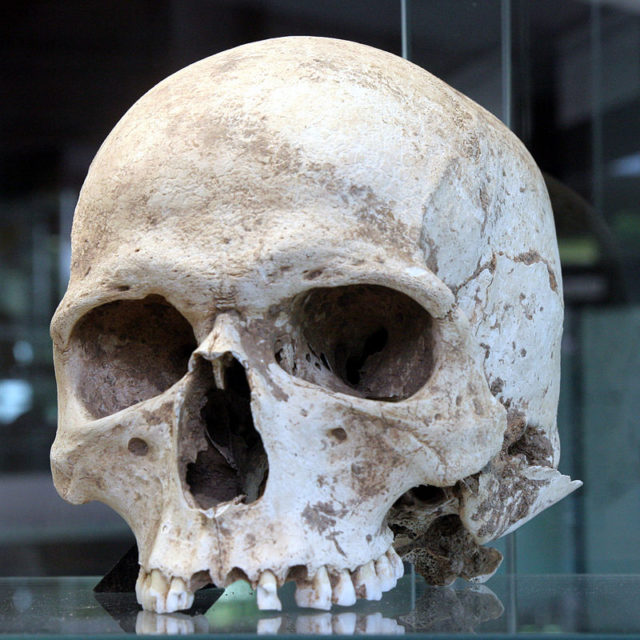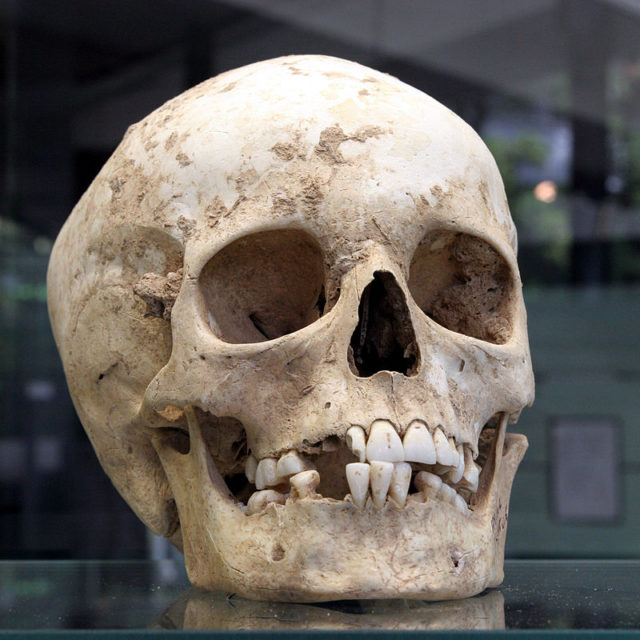Herxheim, in southwest Germany, is a Neolithic site that dates back to 5300-4950 BC. Archaeologists found a mass grave that was used by the people of the Linear Pottery culture (LBK); they believe the site was a ritual center for the area. The site was discovered in 1996 when construction work uncovered bones and human skulls. The excavation ended up being a rescue dig, or salvage dig, as it had already been damaged in part during the construction work.
The structure, found at Herxheim, indicates a large village that was up to 6 hectares in size and surrounded by large ovoid pits had been dug over many centuries. Some of these pits cut into each other and created triple semi-circular areas that split into three sections. The patterns of pits suggest that there was a predetermined layout. Due to their age, they have eroded considerably; the structures inside the pits have also eroded over time, and not many still exist.

There are 80 oval pits around the settlement at Herxheim, containing the remains of both human and animals. Inside are also material goods, such as bone and stone tools, pottery, and decorative artifacts. Interestingly, remains of whole dogs have been found intact in some of these pits.
Using an equation called “minimum number of individuals,” which is a quantification process, the researchers decided that the site contains up to 500 humans, ranging from infants to the elderly. However, only half the site has been excavated so far. Few human remains in the pits are intact, and many were shattered and had been dispersed across a pit.

The people who resided in Herxheim in the Neolithic period were known to practice a style of burial called “secondary burial”. This means that the whole of the corpse or partial pieces of it are removed and placed elsewhere. It is also possible that they practiced “sky burials,” in which some parts of the decomposing bodies may have been allowed to be carried off by scavengers. In 2006, a study of the bones revealed that many had been intentionally broken and cut apart, either at death or just after, and stone tools were most likely used to achieve the breaks that have been observed. The study concludes that Herxheim was most likely a ritual mortuary center, otherwise known as a necropolis, where the remains of the dead were destroyed, for reasons as of yet unknown.
A study in 2009 confirmed many of the 2006 findings, as one pit that had been discovered contained 1906 bones and bone fragments that belonged to 10 individuals, ranging in age from infants to the elderly. It was soon obvious that many of the bones had been singled out for their marrow content, and this suggests that a form of cannibalism was practiced there.

Due to the presence of marks and damage to the bones from impact, it is believed that the bodies were defleshed before the bones were shattered and broken.
The skulls were treated in a similar manner, with many of them struck in a way that caused them to fracture into symmetrical shapes. On many, the vault of the skull was preserved. It is not known at this point why these people used such a ritualistic method of burial. Many theories are being shared about why this site exists, including ritual sacrifice or religious use, but it is still very unclear at present.
